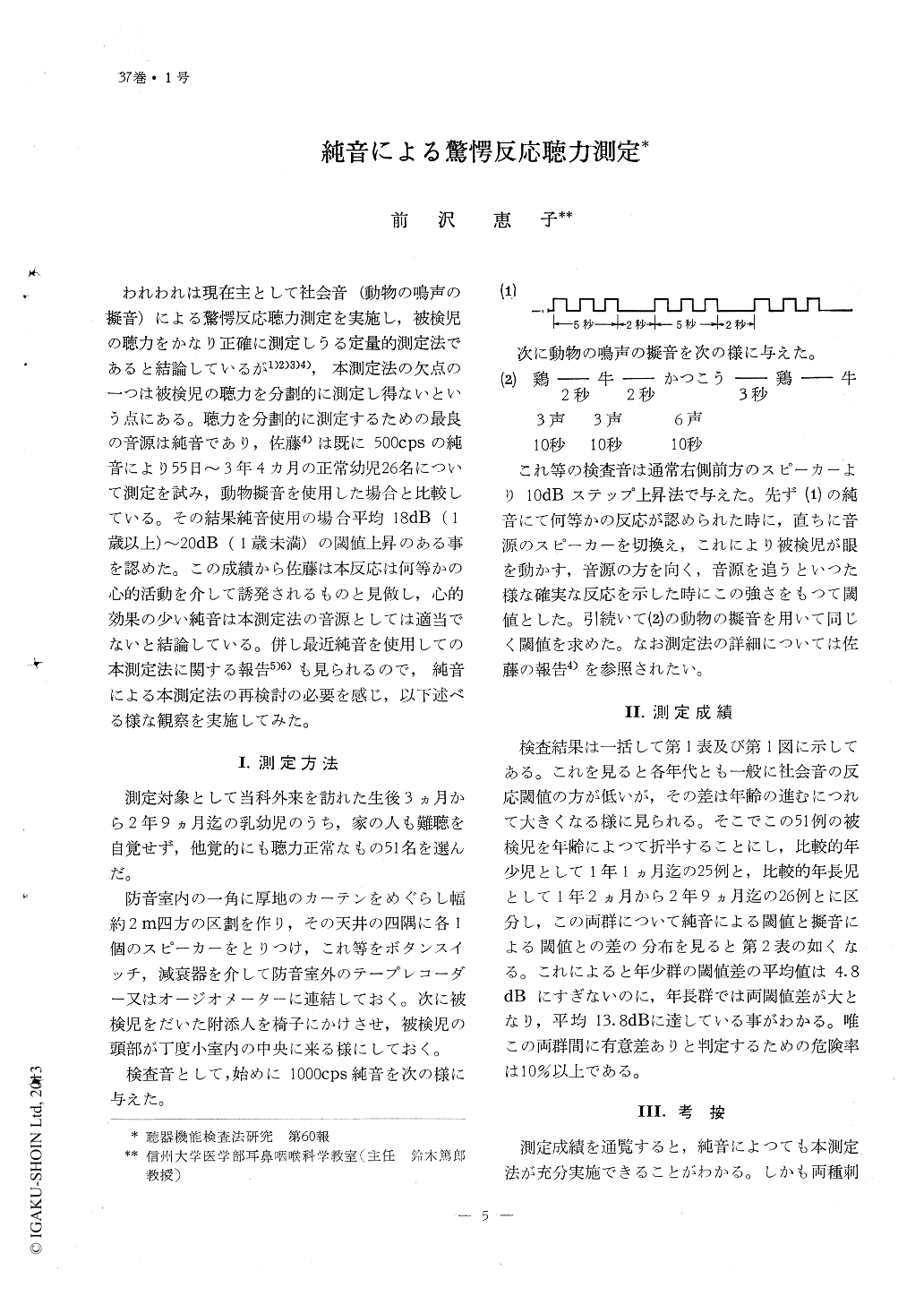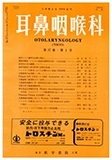Japanese
English
- 有料閲覧
- Abstract 文献概要
- 1ページ目 Look Inside
われわれは現在主として社会音(動物の鳴声の擬音)による驚愕反応聴力測定を実施し,被検児の聴力をかなり正確に測定しうる定量的測定法であると結論しているが1)2)3)4),本測定法の欠点の一つは被検児の聴力を分劃的に測定し得ないという点にある。聴力を分劃的に測定するための最良の音源は純音であり,佐藤4)は既に500cpsの純音により55日〜3年4カ月の正常幼児26名について測定を試み,動物擬音を使用した場合と比較している。その結果純音使用の場合平均18dB(1歳以上)〜20dB(1歳未満)の閾値上昇のある事を認めた。この成績から佐藤は本反応は何等かの心的活動を介して誘発されるものと見做し,心的効果の少い純音は本測定法の音源としては適当でないと結論している。併し最近純音を使用しての本測定法に関する報告5)6)も見られるので,純音による本測定法の再検討の必要を感じ,以下述べる様な観察を実施してみた。
Using startling reactions hearing tests were made in 51 infants considered as having a normal hearing whose ages ranging from 3 months to 2 years and 9 months. Both puretones and social sounds which consisted particularly of simulated barking tones of animals were used for stimulation.
In infants aged below 13 months the average value of the threshold was 4.8dB higher in the puretone than the social sounds and likewise 13.8dB higher in those who were aged 14 months to 2 years and 9 months.
When two types of stimulating tones were compared at similar threshold level the social sounds was easier to use and more definite in results than the puretone.

Copyright © 1965, Igaku-Shoin Ltd. All rights reserved.


